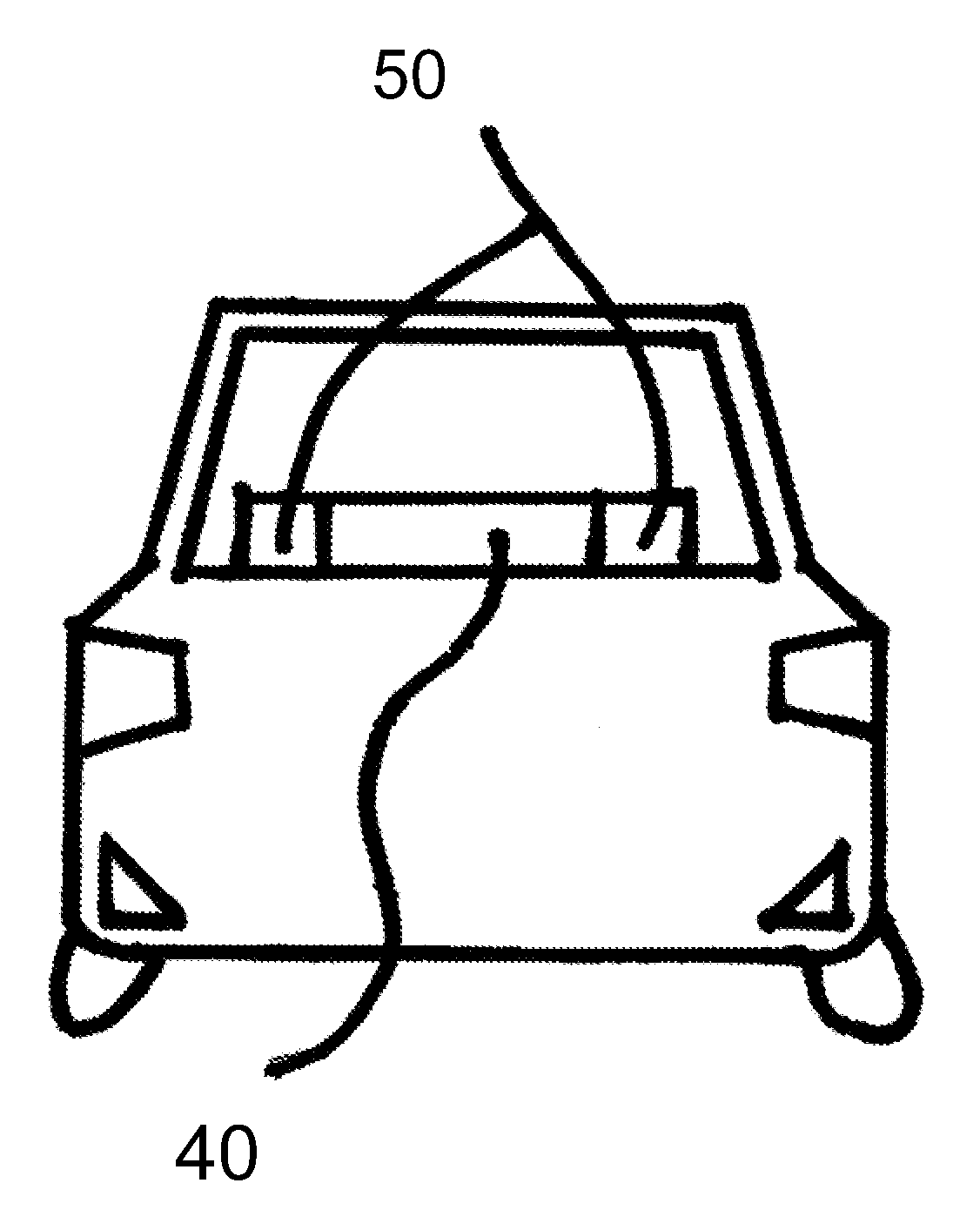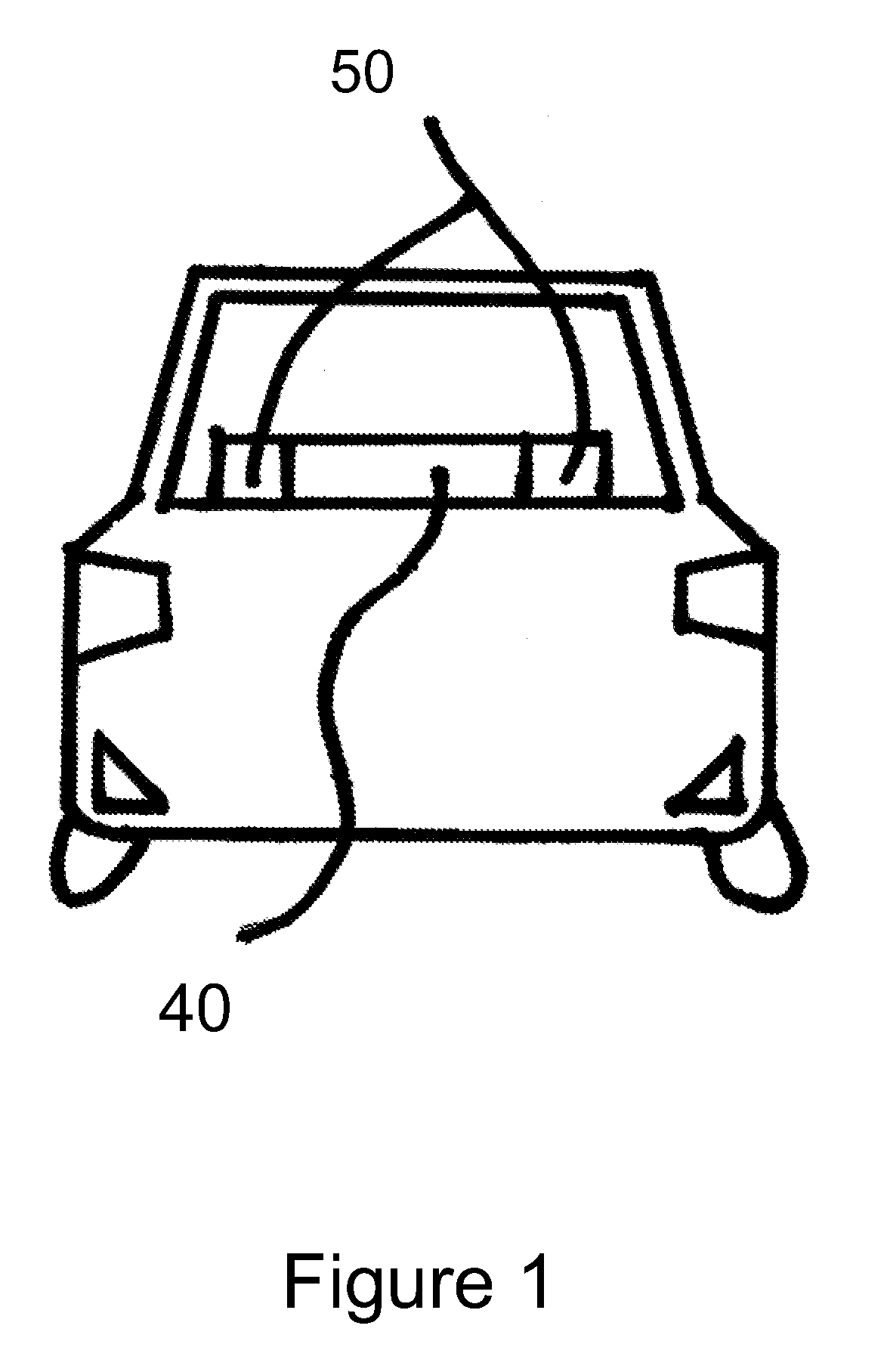Vehicle Warning System
a technology for warning systems and vehicles, applied in the direction of vehicle components, signalling/lighting devices, optical signalling, etc., can solve the problems of difficult for some drivers to determine, driver can easily fail to notice the illumination of a third brake light, and rear end collisions sometimes occur, etc., to achieve the effect of not requiring a lot of time and simple installation
- Summary
- Abstract
- Description
- Claims
- Application Information
AI Technical Summary
Benefits of technology
Problems solved by technology
Method used
Image
Examples
Embodiment Construction
[0025]The present invention is an abrupt braking indicator that is designed to complement existing brake lights of a vehicle by warning drivers following behind the vehicle of an abrupt stop or other emergent-braking conditions as opposed to the mere common use of the brakes for slowing down or turning. The Abrupt-Braking Indicator (ABI) is adaptable to virtually all types of vehicles in respect to its placement and installment. Moreover, the present invention consists of a relatively simple construction, which aids in its durability and installment while maximizing its desired effect. The present invention is made of a conventional switch mechanism that activates a flashing light at or above 0.5 G and an electrical connection that can feed off of the existing connection to the vehicle's third brake light or any other power supply.
[0026]FIG. 1 shows the two flashing strobe lights (50) lit to demonstrate their distinct brightness and color in conjunction with the existing third brake...
PUM
 Login to View More
Login to View More Abstract
Description
Claims
Application Information
 Login to View More
Login to View More - R&D
- Intellectual Property
- Life Sciences
- Materials
- Tech Scout
- Unparalleled Data Quality
- Higher Quality Content
- 60% Fewer Hallucinations
Browse by: Latest US Patents, China's latest patents, Technical Efficacy Thesaurus, Application Domain, Technology Topic, Popular Technical Reports.
© 2025 PatSnap. All rights reserved.Legal|Privacy policy|Modern Slavery Act Transparency Statement|Sitemap|About US| Contact US: help@patsnap.com



